Mirastelai
Though I had not seen the sky in years, I soon felt that it sprawled out below me...Mirastelai, also known as deep stellarshrooms, are a species of mushroom that grow only in the deep subterranean depths of Istralar. They form an important part of the mystifying ecosystem belonging to those shadowed depths, serving as a source of light, food, and material all in one due to their unique properties. While they are most commonly recognised for their bioluminescent blue fruiting bodies, these are not their entirety.
They are a symbiotic fungus, as some are, but in a more unusual way than normal. While most fungi can only bond with plantlife, mirastelai are capable of forming a mycorrhizal relationship with almost any living matter. Through this special ability, they have spread thoroughly in areas of the depths suitable for them to grow as sapient and non-sapient beings alike find themselves becoming reliant on the glowing blue mushrooms.
While they are certainly not the only bioluminescent mushroom species found beneath the world's surface, this ability does render them one of the easiest to identify, whether by the sheer amount of mirastelai coating a cave or by the blue glow or mushroom decor it can lend those it bonds to.
Naturally, that's changed some things for predators. It's a lot easier to find your prey if they've got bright blue mushrooms all over them - and equally easier to lure the prey close if they're seeking easy prey.
They're our allies and our friends! They can't speak, sure, but they help us. When do we ever find wildlife that's not actively hostile down here?!
Basic Information
Anatomy
I'm sorry, they grow how big?Mirastelai are rather interesting, anatomically, compared to their fellow mushroom species. Visually, when found semi-alone, their fruiting bodies are blue mushrooms with bulbous heads and blue-white gills. When picked, the blue colour of these fruits rapidly fades, leaving behind a solid white mushroom that can take on other colours through dyes.
Though they are usually found at small sizes, mirastelai do not stop growing unless deprived of nutrients or space, and thus may reach truly immense sizes. This is partly where their name's suffix of 'stelai' derives: while reminiscent of the word stella for their starry effect, stele or stelai are standing stones used often as markers throughout many cultures.
Beneath the surface is where researchers often work themselves into a frenzy. Mirastelai resemble arbuscular mycorrhiza in the symbiosis they form with living beings in that to form a bond with a mirastela is to be changed by the odd fungus. When forming a bond with any living creature, the fungus slowly extends itself through their outer layers to form arbuscules within them.
In plants and other similar materials, these arbuscules form in the cortical cells and allow a more standard exchange of nutrients between the two parts of the system. As the mirastelai draws carbon and other similar materials from the plant, it can be extremely beneficial to encourage mirastelai growth in areas dense with carbon dioxide to reduce the risk to mortal life.
Symbiotis with Sapient Beings
In humanoids, such as the drow that take advantage of mirastelai, the fungus instead penetrates into the subcutaneous fat layer and the lymphatic system. Fungal hyphae infiltrate adipose tissue and crease arbuscule-like structures within fat cells to absorb glucose and lipids from the mortal while depositing amino acids, sugar, and water into blood vessels.
The body's immune system would usually react violently to such an intrusion, but this is why it also tackles the lymphatic system: it is able to modulate the immune response, convincing the body that the fungus is helpful, and then uses the system as a transport route between both fungus and body.
At a glance, the exchange between mirastelai and living being seems relatively unhelpful and easily replaceable with regular consumption of food and water. However, in the depths of the world, access to these resources can be impossible.
Mirastelai themselves are capable of absorbing moisture and nutrients from the environment through spreading their network further, and when reconnected to a mobile host, can redistribute these nutrients. So long as the host remains in good health - which mirastelai inherently do attempt to ensure - then their mirastela will attempt to maintain them. This does mean that when a host is severely injured or unwell beyond the possibility of ordinary healing, the fungus will shift its purpose.
Genetics and Reproduction
At this point, it's a fashion statement.Like any good but mildly horrifying symbiotic fungus, mirastelai have a few ways of reproducing. Part of their reproductive cycle is relatively simple and normal for this sort of fungus: they embed pods within the ground near the plant that shall remain in stasis until a new suitable host manifests. If a host appears, be it a plant taking root or an ambitious dwarf digging holes, then the pod releases spores that begin the process of burrowing into the plant's roots or the creature's skin. The fungus can also produce fruiting bodies, which is pretty atypical for arbuscular mycorrhiza. These fruiting bodies are the identifiable bulbous blue mushrooms that most people recognise, and that some people have developed a taste for. These are produced when their host dies in what is considered a death bloom, often naturally forming a circle around the consumed remnants of what was once a host.
These circles can sometimes be confused with the mushroom circles created by the fey, and indeed, the trickier fey take advantage of the resemblance by tricking foragers into stepping into glowing blue mushroom circles that are definitely not mirastelai. Take care when exploring caves, adventurers.
The fruits are also one of two ways mirastelai reproduce when embedded into a living, mobile host. Most hosts of mirastelai will never experience fruiting bodies, to their great relief. Usually, mirastelai will use their access to the lymphatic system to spread spores through the usual substances sapient beings leak or shed, such as sweat, tears, skin flakes, and phlegm.
In particularly strong relationships, this renders a faint bioluminescence to a host's skin and emissions - which can be particularly entertaining in the bedroom.
In some cases, however, mirastelai can produce fruiting bodies through their mobile host even while their host lives.
Additional Information
Uses, Products & Exploitation
Well, when life gives you mushrooms, you may as well make mushroom soup.
Mirastelai have been a part of daily life in the deepest depths for many years now, and over time, their use has grown exponentially.
Naturally, the fruiting bodies are used in a variety of mushroom-based food dishes; that hardly needs announcing. It's the rest of the mushroom crafts and oddities that are rather more interesting.
Mundane Uses
I would have had a glowing blue house, but someone accidentally set my bloody colony on fire!As the fruiting bodies can grow to incredible heights on plantlife, numerous techniques for creating mycelial bricks have been developed across the various underground communities. Some choose to cultivate mirastelai colonies into growing into brick-like moulds, harvesting them at certain points and using the bricks to build lightweight, flexible buildings.
Some, especially for settlements dominated by smaller creatures like the svirfneblin, prefer to let the mushrooms grow to an appropriate house-like size and then live inside them, though it's personal preference on whether the mushroom is killed before being moved into.
The more engineering-minded have also developed intriguing techniques in compressing layers of mushroom material under high heat to create strengthened building blocks, allowing for more defensible structures.
These are especially efficient when combined with more standard materials - a layer of mirastela-brick between two layers of stone adds a level of flexibility and insulation to the building, and the opposite method often misleads attackers into believing they only need to worry about the mushroom.
Mirastelai have also proven useful as an easily renewable alternative for many everyday materials.
Magical Uses
For the umpteenth time, they're not hallucinogenic.As is always the case, wielders of magic have long since found all kinds of bizarre uses for mirastelai. Live mirastelai must be used with extreme care in magical rites due to the risk of a person's colony determining that they are beyond mundane help and turning against them: those in danger of this happening are often cured of their mirastelai as a first precaution.
The disconnected fruits, however, can be used in potions and poultices so long as the spores inside are either nullified or the effects of a mirastelai colony awakening in the consumer are taken into account.
With this in mind, mirastelai fruits are most commonly involved in curative potions. The fruiting bodies are relatively nutrient dense and take on other substances easily whilst also having mild antiseptic properties, making them perfect for complex multi-step potions and antidotes.
They are rarely found in poisons as the mushroom's behaviour naturally attempts to counter or neutralise poisons, though are sometimes used for sabotage in this manner.
Alchemists, especially those born to mirastelai-using colonies, often prefer to distill the bioluminescent properties of mirastelai into far more usable forms. Fashionable in this millenium is a fusion of crystals and bioluminescence to then use as decoration, with mirastelai core to the recipe.
Scientific Name
Mycela mirastelai
Conservation Status
Least Concern
Geographic Distribution
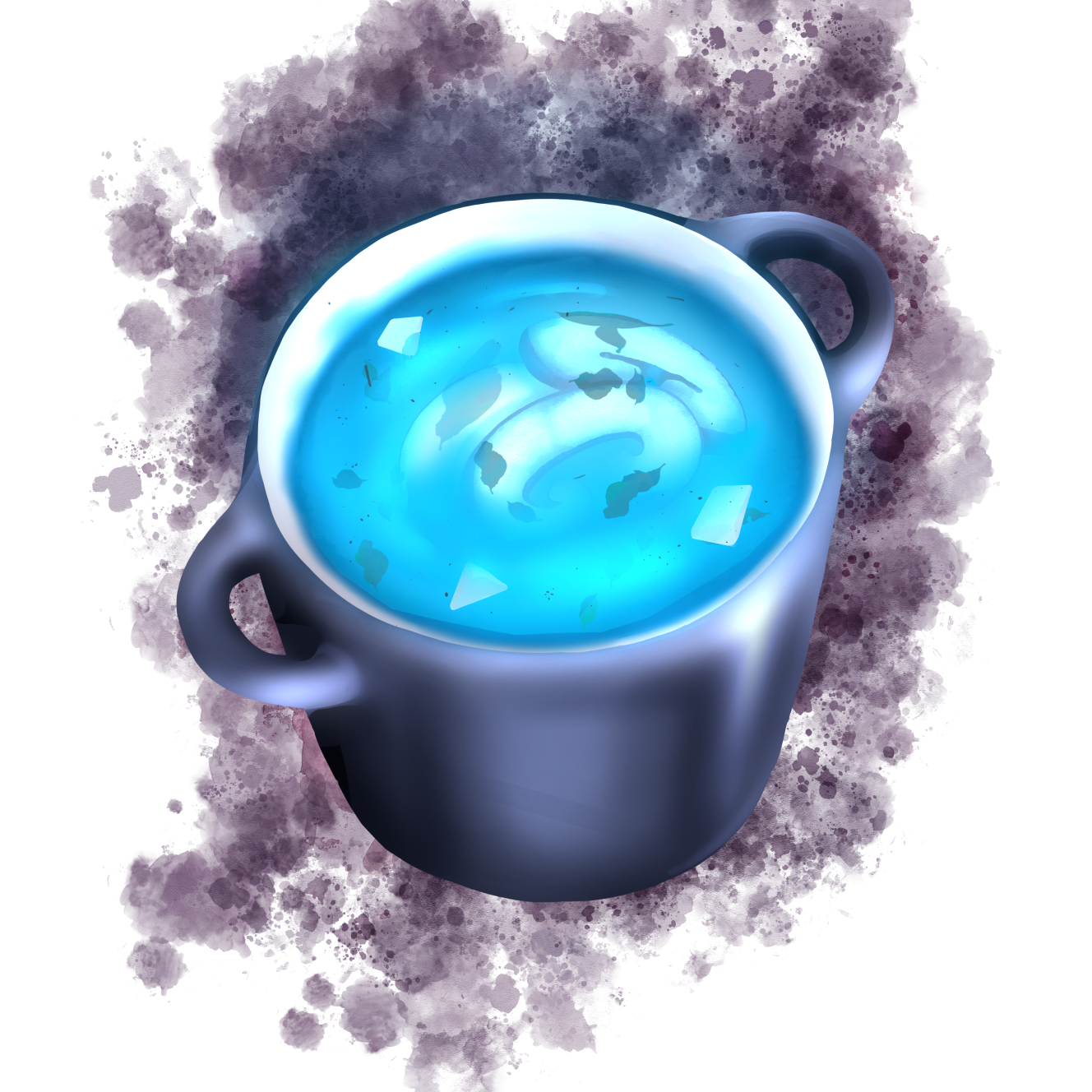
Mirastelai Mushroom Stew by AlbieDraws
Weaknesses of Mirastelai
By far the most irritating limitation of mirastelai would be its weakness to bright light. Though ubiquitous in the depths where the sun cannot reach, one will never see mirastelai on the surface as sunlight immediately scalds the fragile mushroom. Fire, too, is incredibly effective against the mushroom, living or dead. This has been an unfortunate fact for many deep earth warriors who ascend in mirastelai leathers and rapidly lose their armour as it begins to disintegrate in the light. Special enchantments of shade must be placed on anything constructed of mirastelai to keep it safe in such an environment, though such spells do not often extend to keeping mirastelai alive or able to spread. However, this weakness being so common is a boon for any wishing to rid themselves of mirastelai. Simple sunlight exposure - or, in more urgent situations in the depths, a quick dance through fire - will rapidly kill all traces of mirastelai in a person. When slain, the invasive hyphae within the body's systems are quickly dismantled by the immune system and flushed out. Subsequent mirastelai establishment is not harmed by this procedure, though the same cannot be said for anyone deciding to jump into a fire.Okay, what's going on here? Everyone's insistent that these mushrooms are harmless, they're helpful, they're so good at healing, all that jazz. Except Jeissen ate one of their fruits. Complained he hated it. And now he's dead. They're claiming it must have been an allergy. I don't buy it.
The Penny Drops
Oh, come on. You didn't really read through all of this and think this miracle material wouldn't have a downside? Easily cured by flame and light, easily grown, heals people, all of that jazz? If your eyes are sharp enough to read this, then you should stop falling for mushroom propaganda. Hold your will close. You'll need it for this next part. Make a Will save. If you roll above a 10, click the first spoiler. If you don't - click the second. Roll your save! Will save succeeded!
Okay, here's the deal.
Most of what's written here is the truth, yes. What it fails to detail is that the mushrooms are manipulative in their own way. As they touch new hosts, they alter them to become further and further dependent on the mirastelai. The relationship is symbiotic, yes, but it's also not even.
Those that resist their newfound home are consumed by it. Those that accept their changes are welcomed into the fold. It's rare that sunlight will ever kill mirastelai because living hosts will never want to go up there.
Why, you might ask? Why would a mushroom do this? It's a fungus, it doesn't have a brain.
Now, therein lies the worst part. Mirastelai did not evolve naturally. They're a creation. And whoever created them is still taking advantage of the fruits their monstrosity brings them.
Haha, just fucking with you. They're just mushrooms. Go eat your mushroom soup and get some rest.
I'm sure they won't be a problem any time soon...


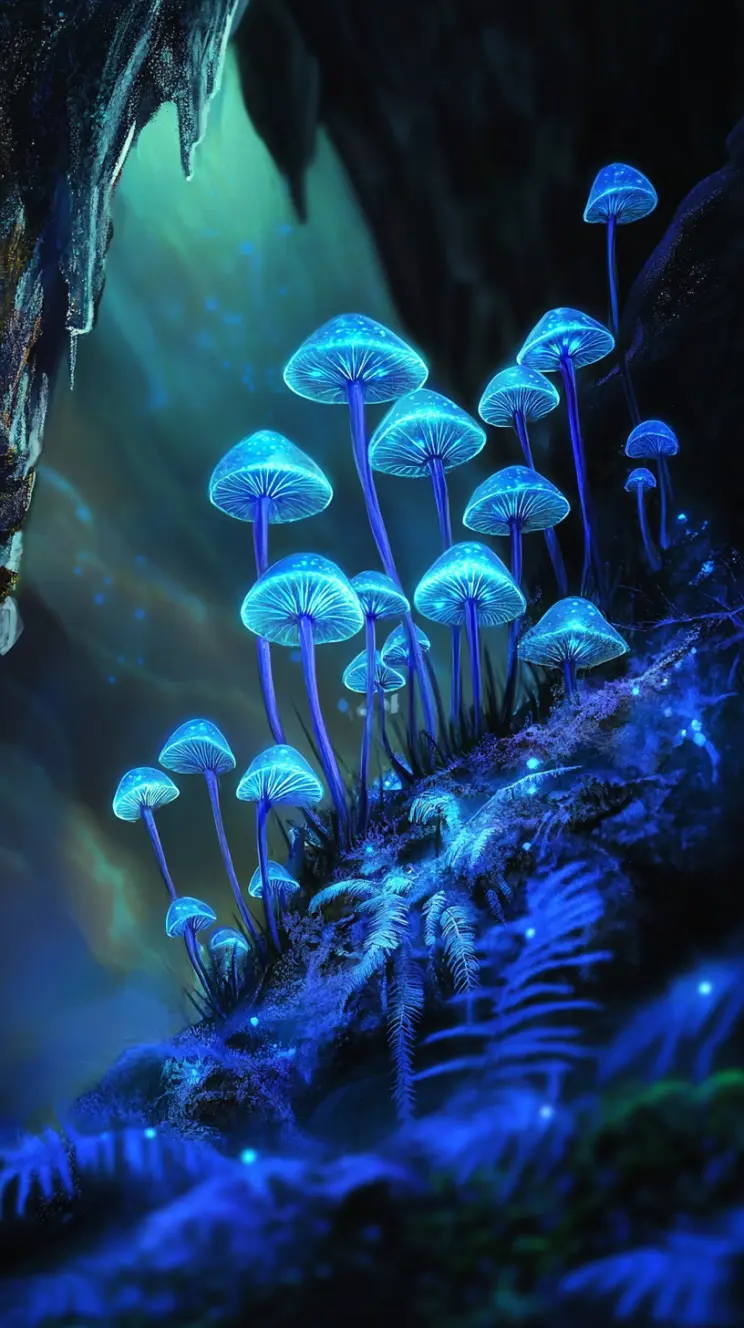
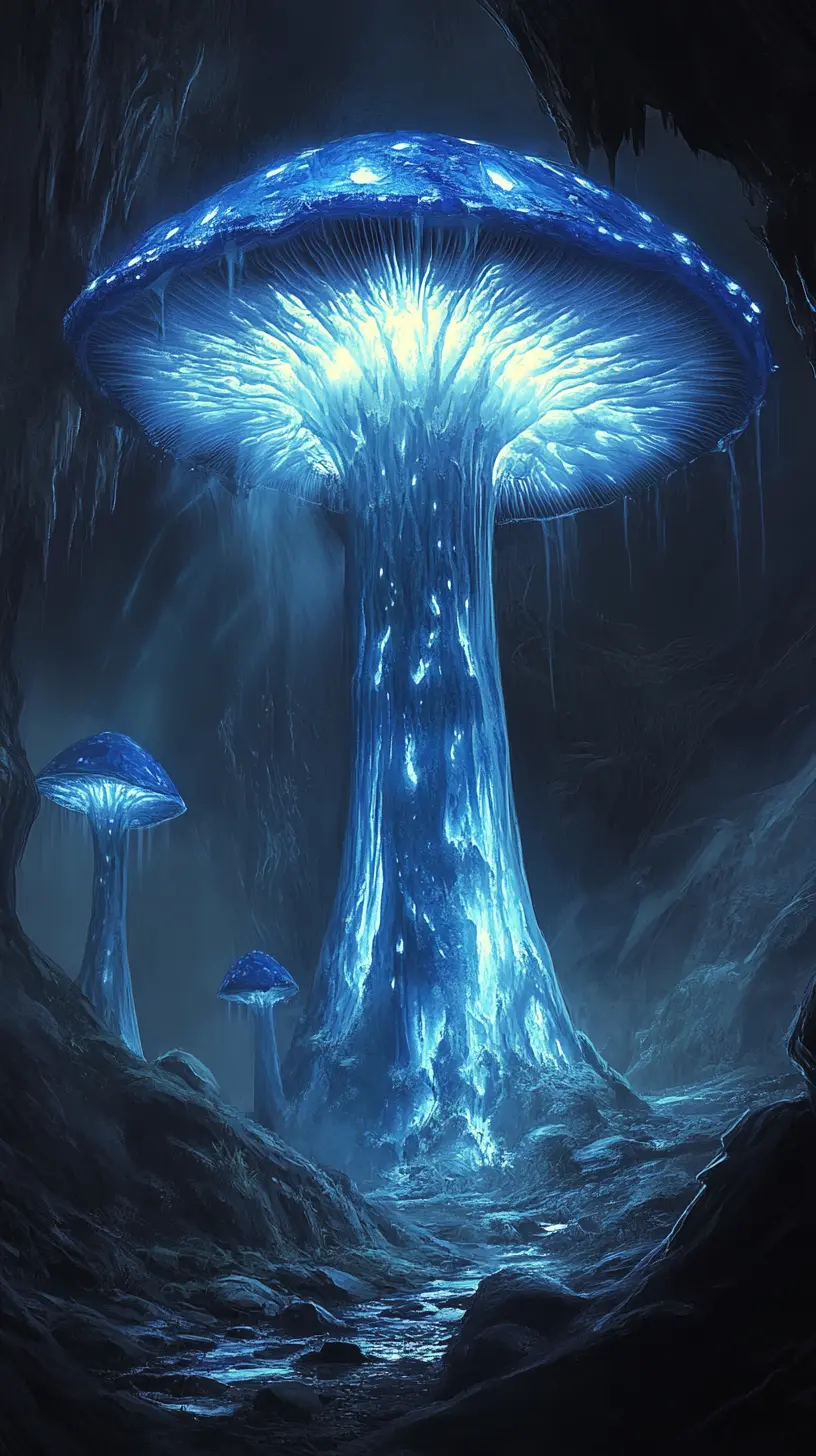
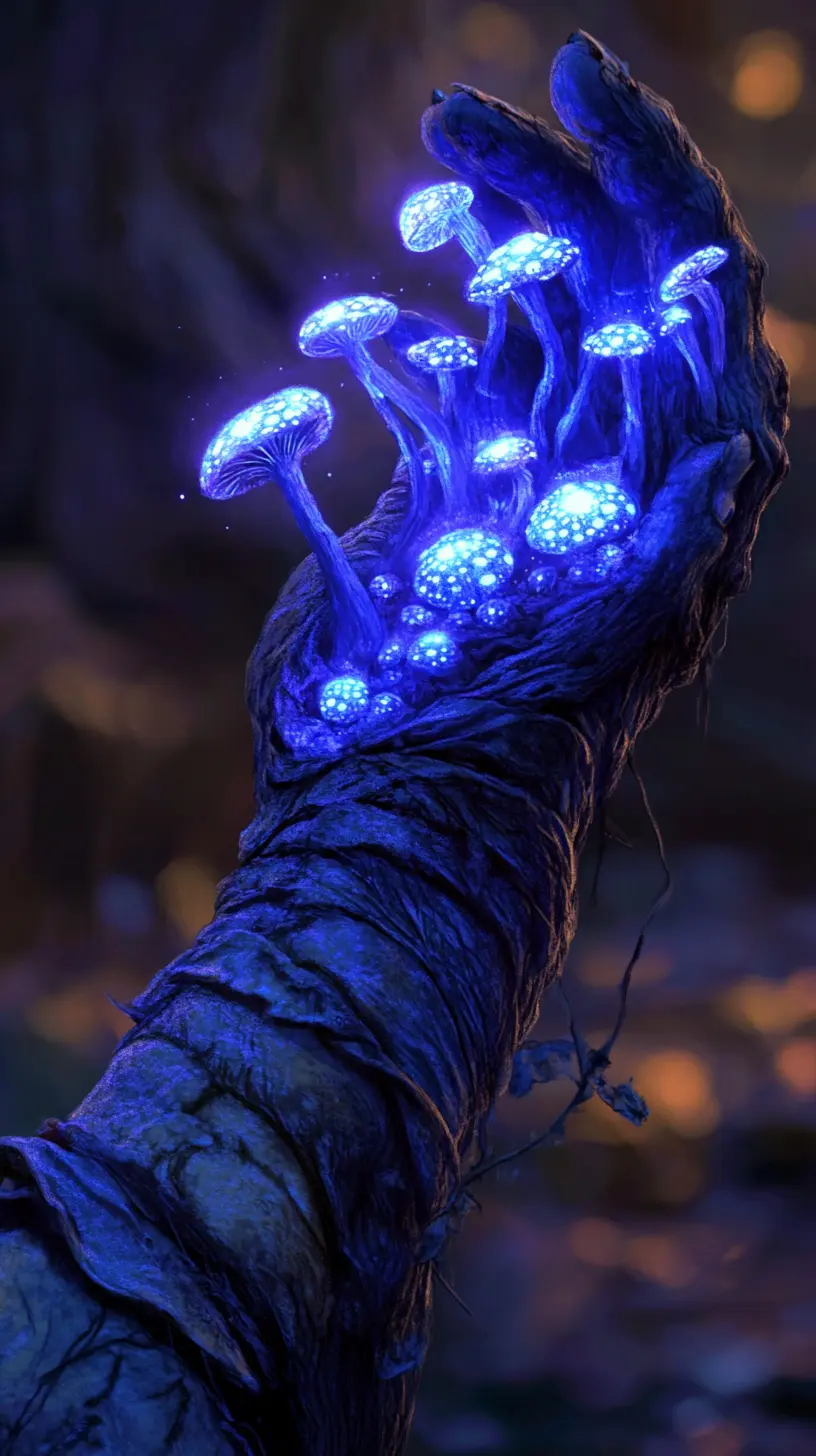
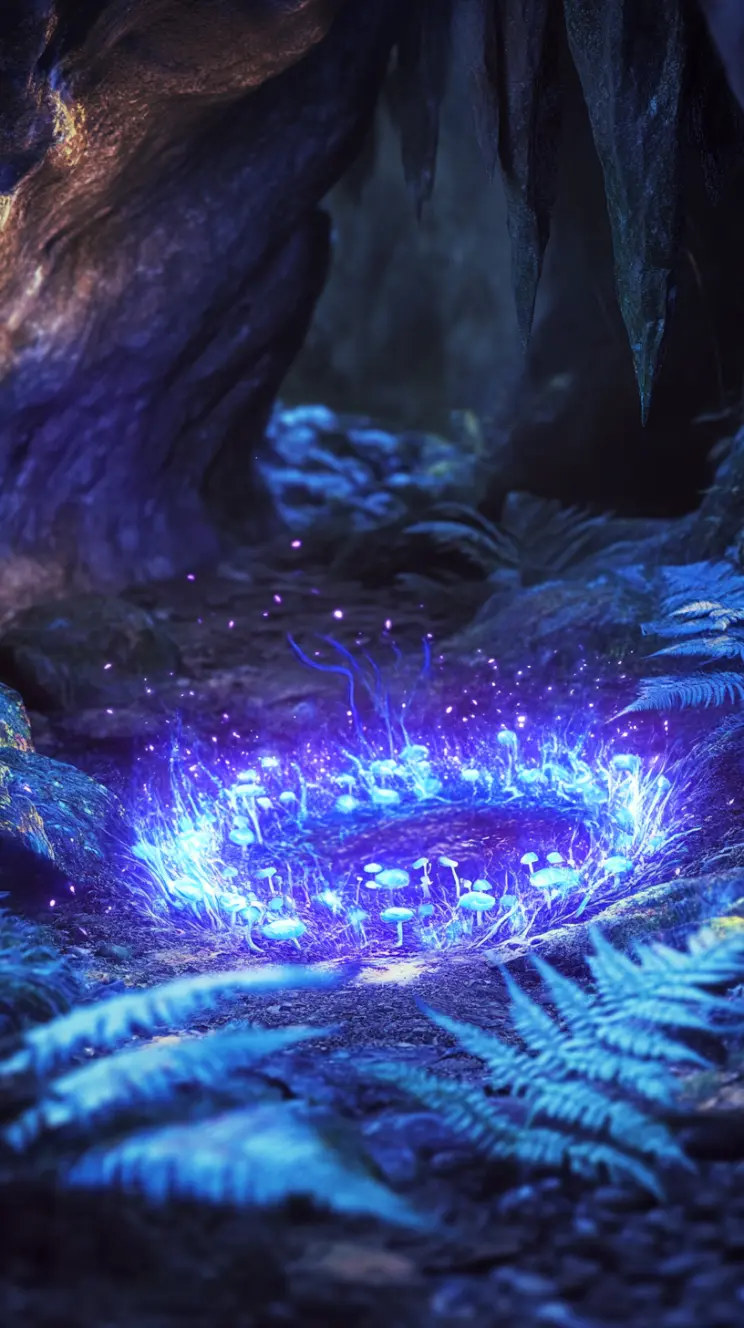
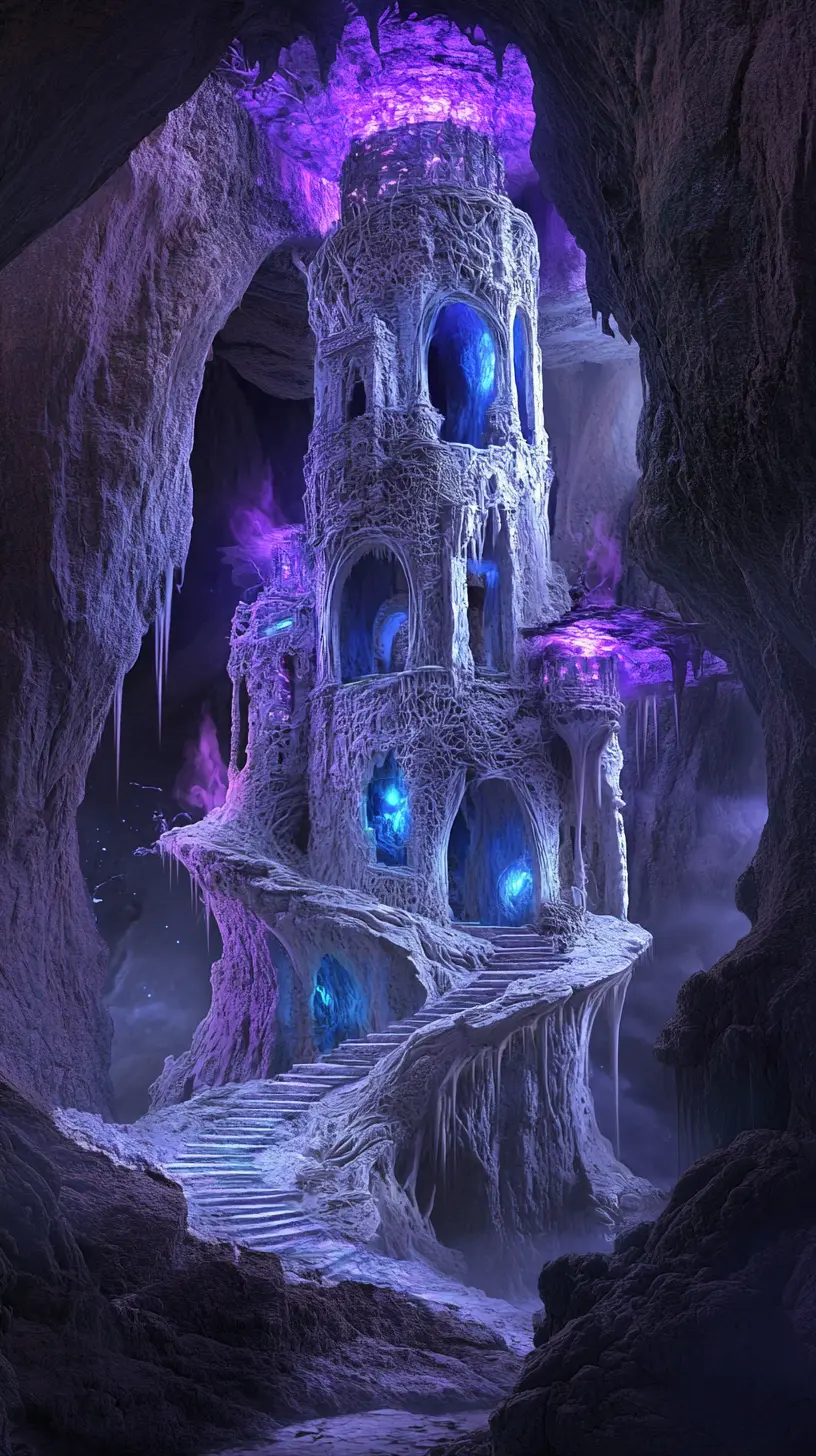
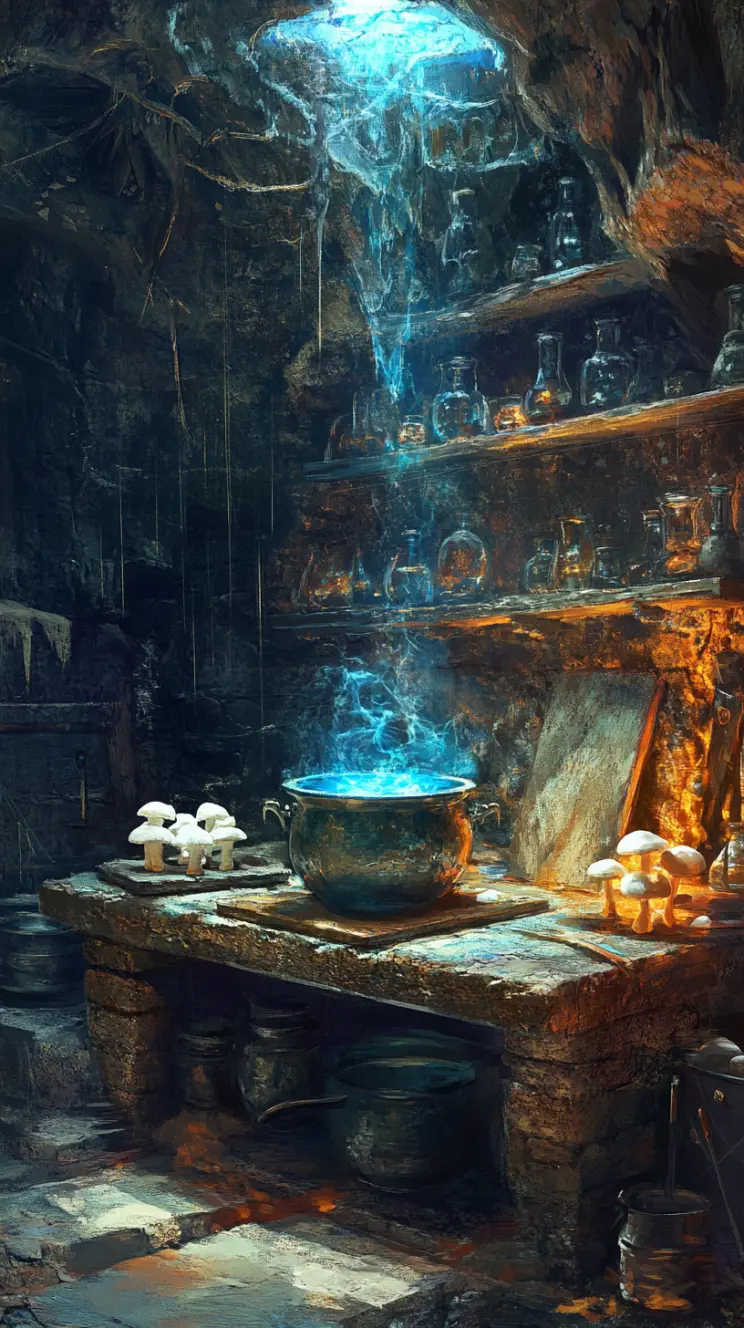
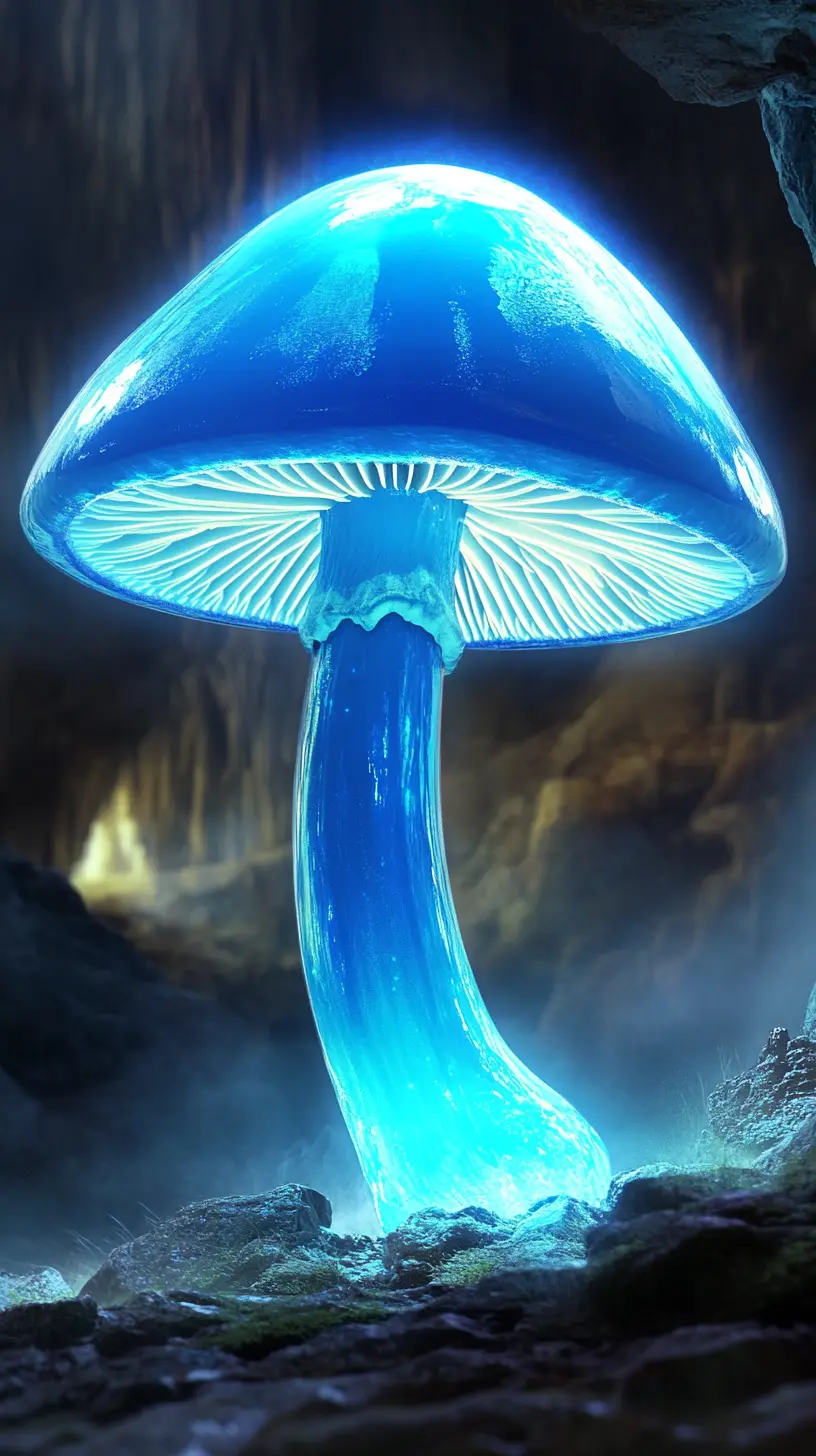
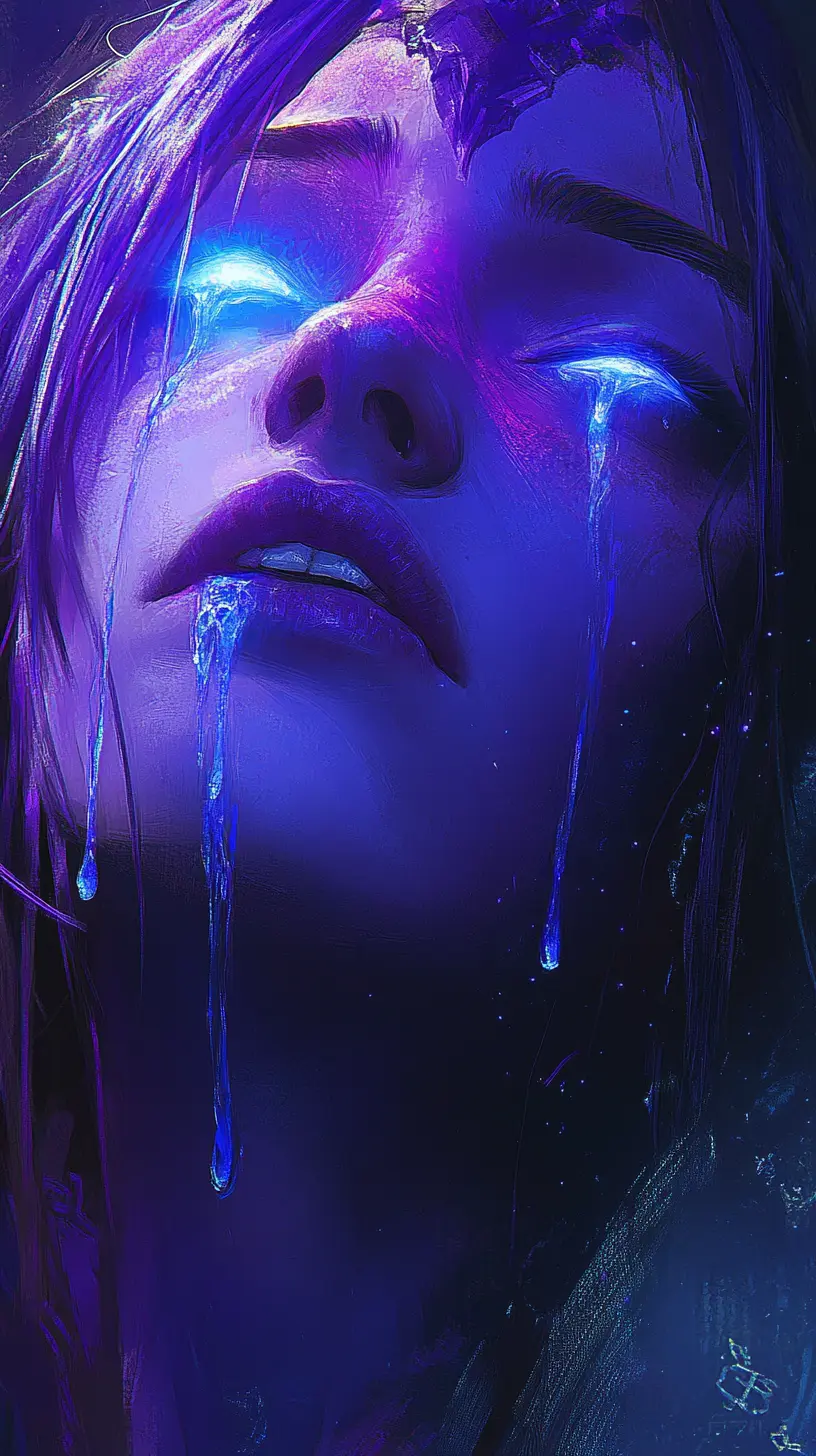
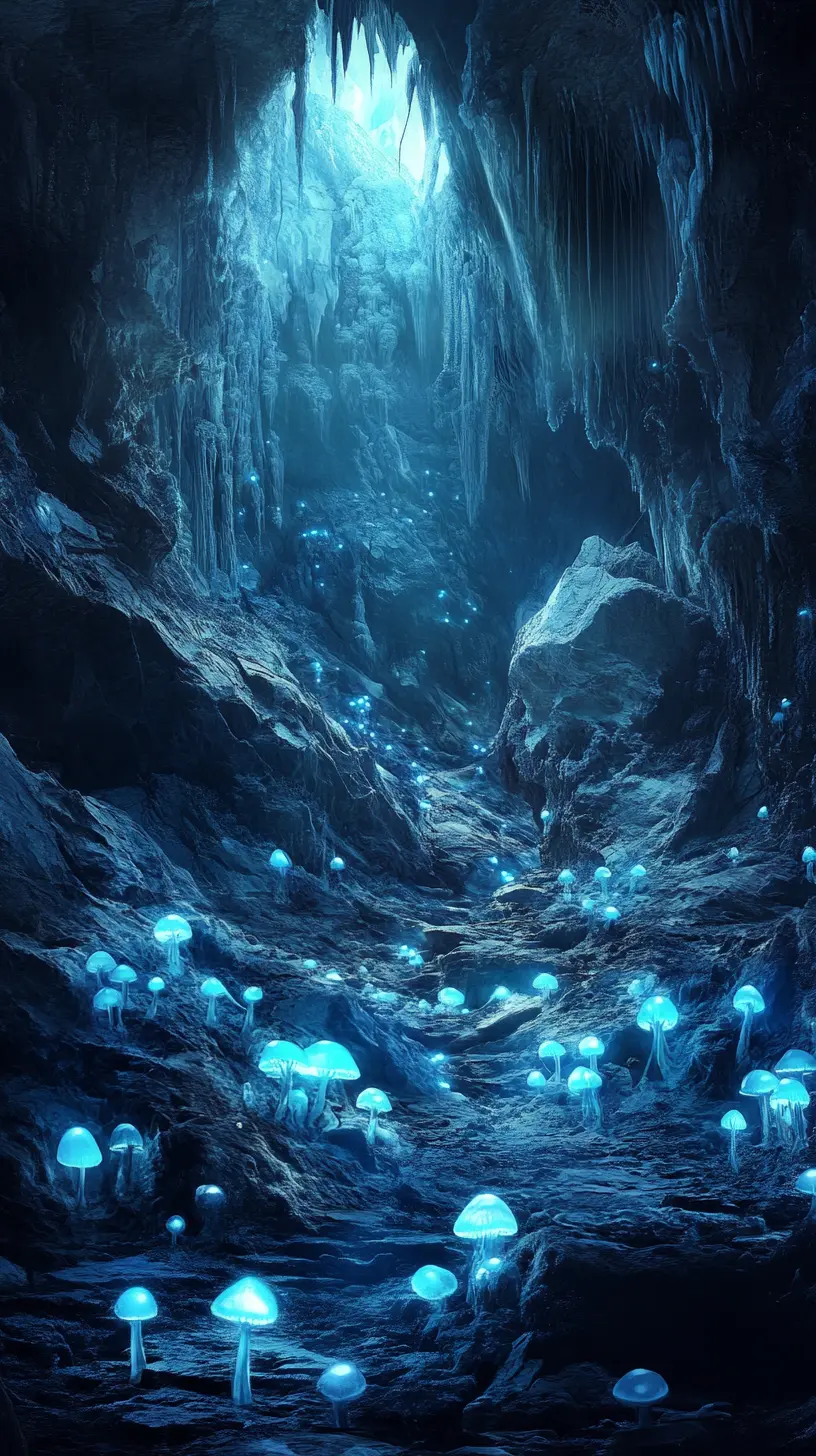
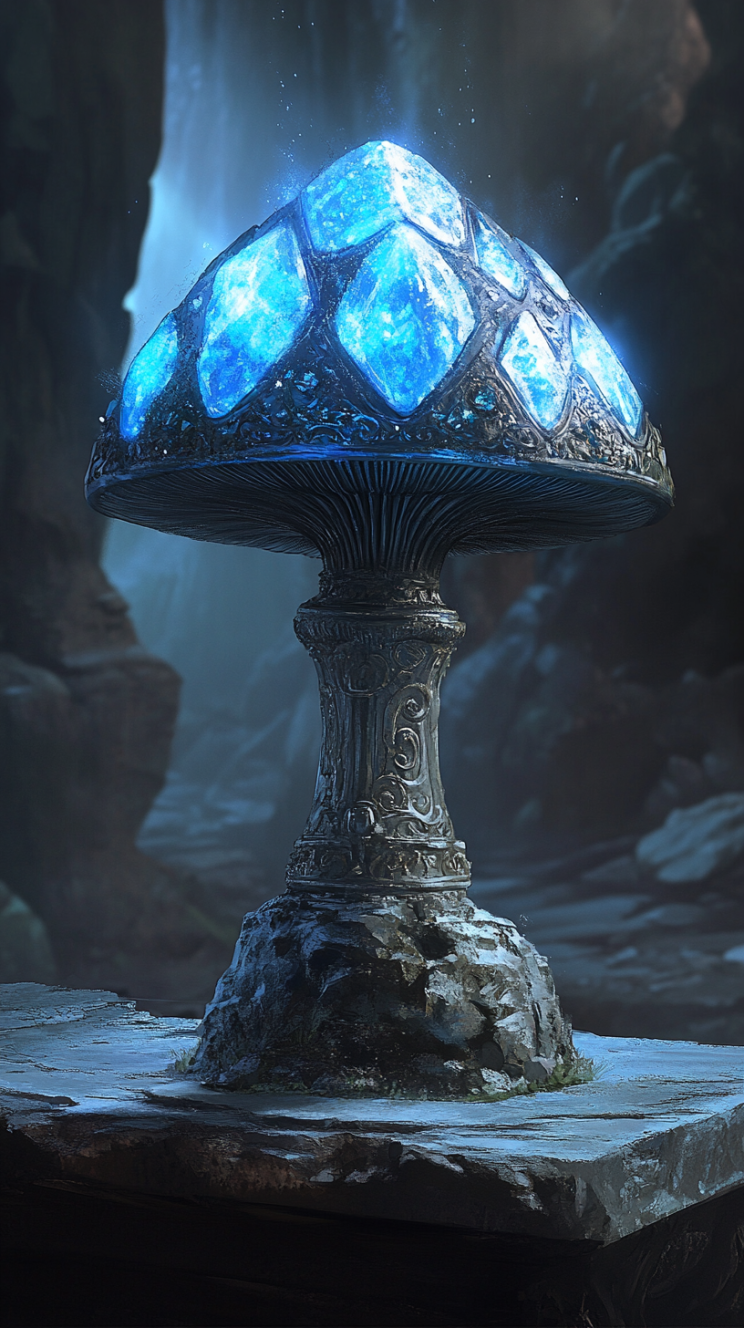
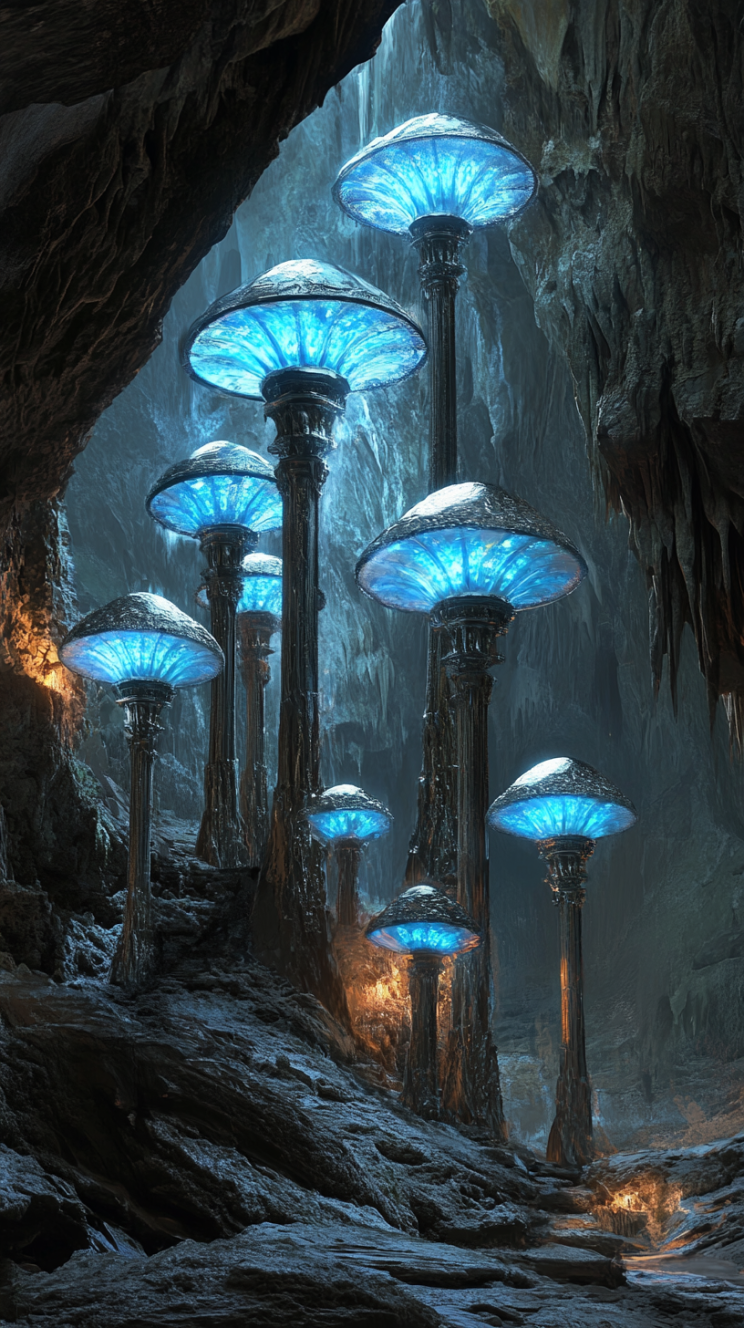






Han. Han. HAN!!! You did it again. You absolute wilde creature what the hell did I just read. I adore them. Yet some part of me wants to cleanse them with fire cause I succeeded my Will save and WHAT DO YOU MEAN THEY WERE CREATED AND SOMETHING IS STILL TAKING ADVANTAGE OF THE FRUITS THEIR MONSTROSITY BRINGS THEM HUH? You had me full gaslit most of the way through this, I honestly believed 'oh look a neat twist the *underdark* where we expect nothing but danger and hostility, surprise there is something that is actively helpful and NOT deadly or with other intentions. BUT THEN I READ THAT!?! What do I do with that, and what the hell do I do now, I didn't think to prepare for this, and now the locals are insisting I simply MUST try the mushroom soup!!! Long winded bit aside, this article is fantastic. Fantastic doesn't even do it justice, I don't think there are enough adjectives for that purpose. I simply don't have words, you never cease to entertain, amaze, intrigue and just dig those hooks in like some deranged bard-fae-eldritch diety and just not let go.
I love the soup now has art, fantastic. And I most definitely am adding this one to the collection, once again, thank you :)